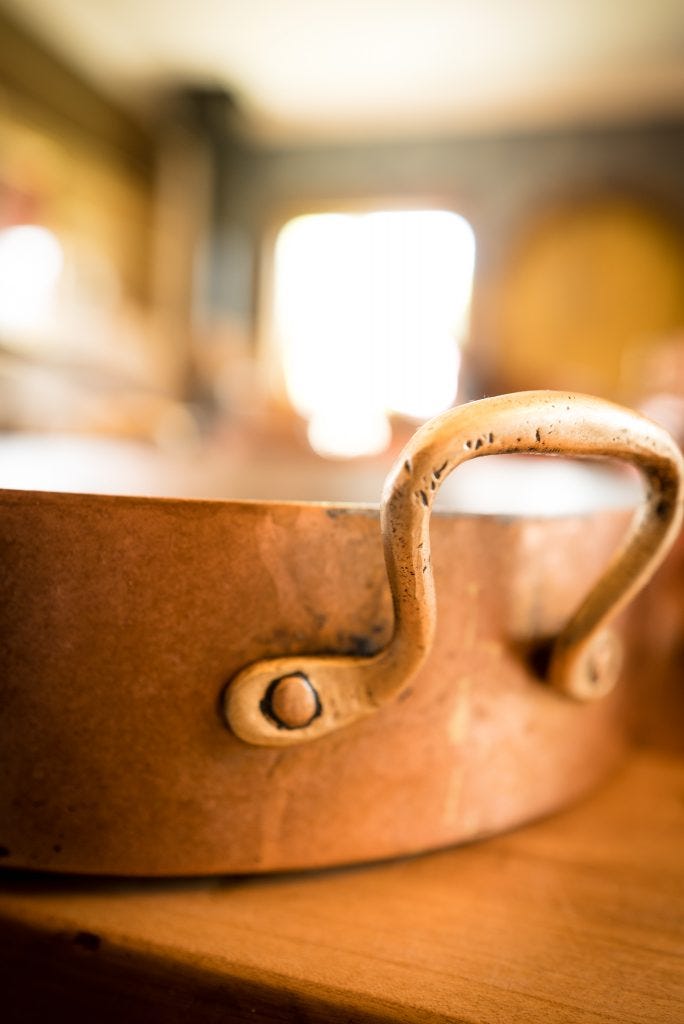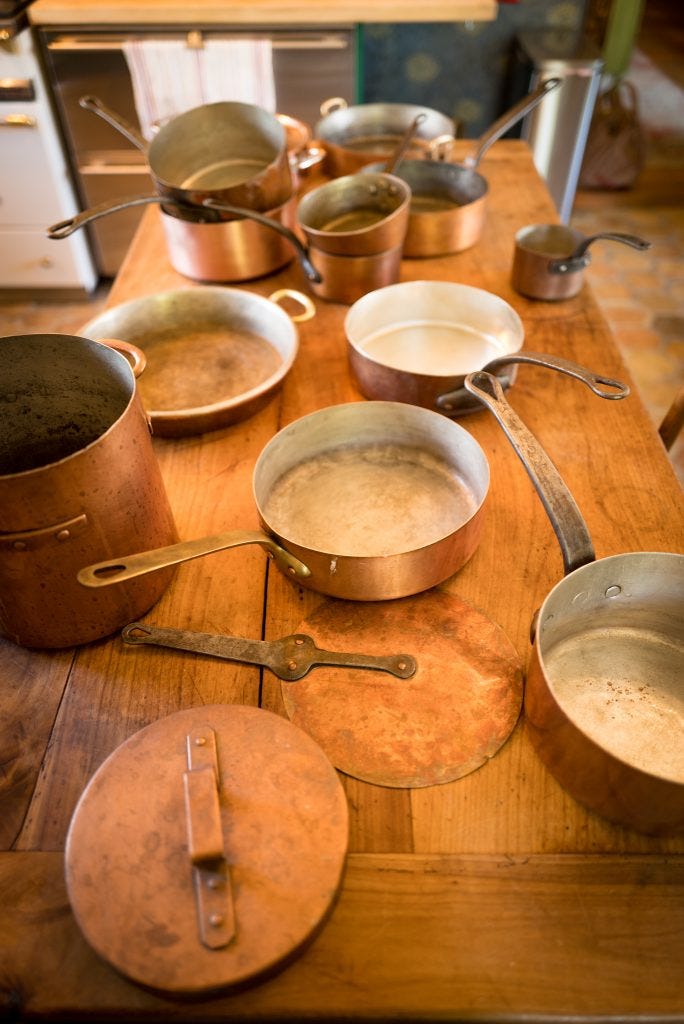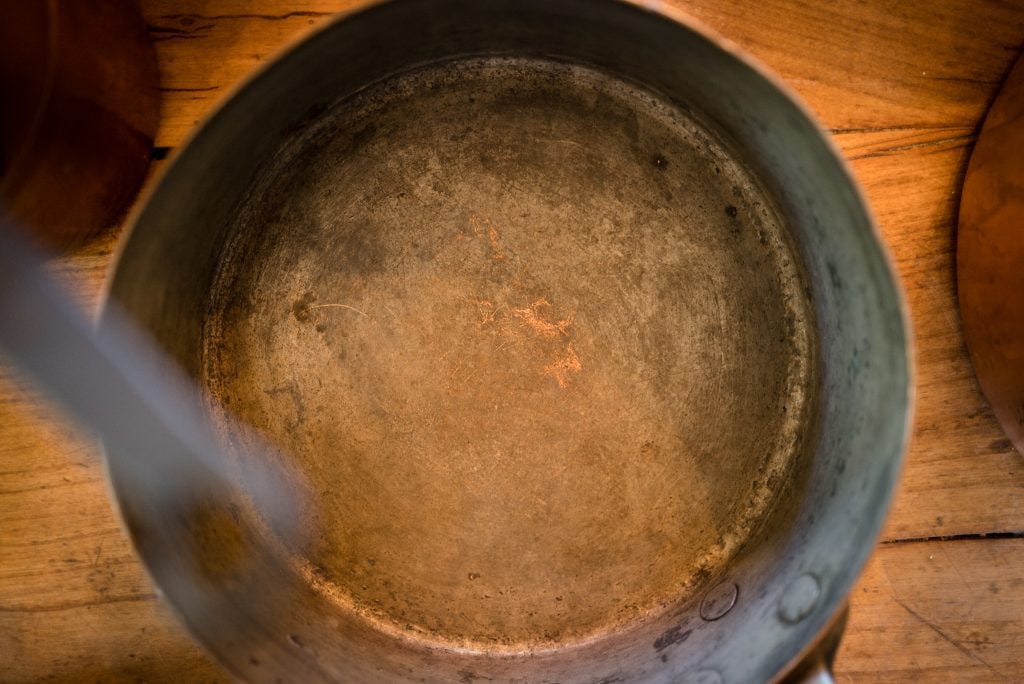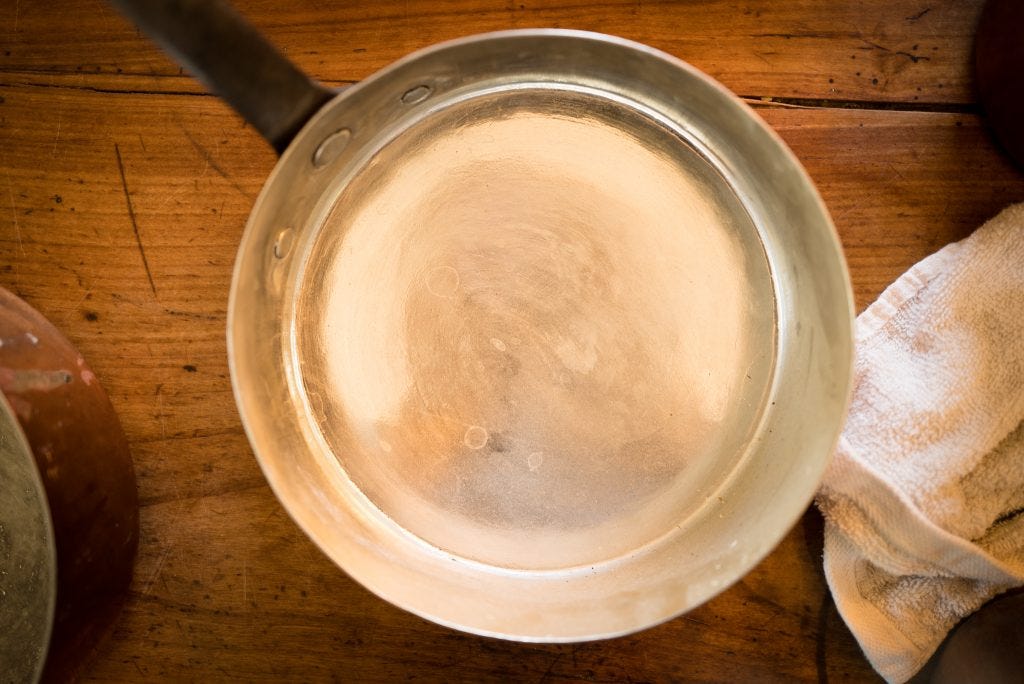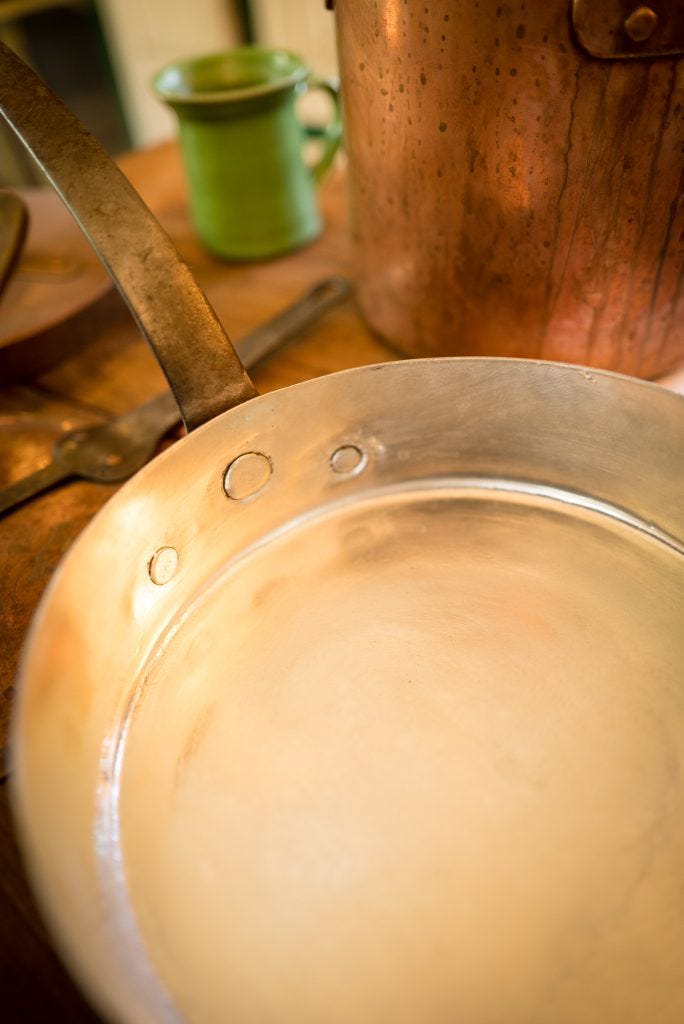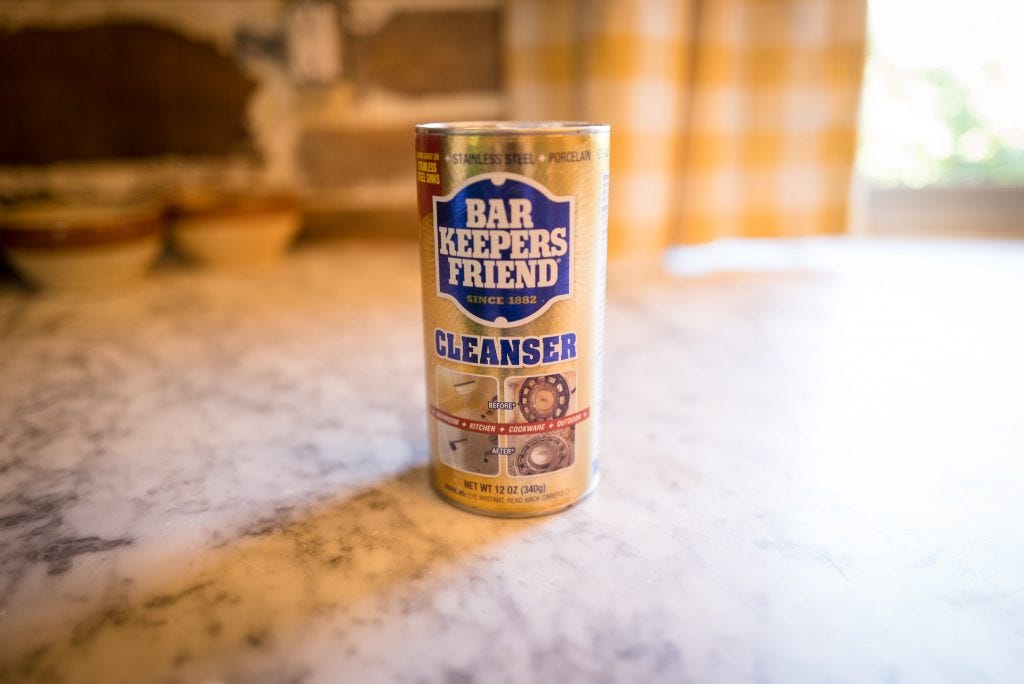The copper cookware post. The post that every single person on the entire internet has been begging me to write for the last decade. No? Well at least some of you have. I know because the two questions I answer the most in my work are:
Can you tell us more about your copper cookware?
Why is my sourdough starter turning moldy?
That's it. My entire life's work can be summed up in answering those two questions.
We'll talk about sourdough starters another day perhaps (the trickiest thing I've ever taught people to do is make sourdough over a screen), but today is all about the copper cookware. The cookware that hangs right above my Lacanche and is used all day, every day in my cottage kitchen.
Some have asked me if my copper cookware is simply for aesthetic pleasure in the kitchen. Get outta here with that nonsense. My kitchen is much too used and much too squished for an entire display of look-but-don't-touch pots and pans.
To put it simply, yes we use our copper pots and pans. Yes, they're easy to care for and maintain. Yes, I'm going to deep dive into the details and tell you exactly what's up with copper cookware so that you can feel confident bringing it into your own kitchen.
Why Copper
In short, I source copper because they're wonderful conductors of heat (they disperse heat very evenly) and last for ages. It's that simple. Unlike a lot of cookware available, copper wears its age well – the dings and patina somehow make it spectacularly beautiful. Some of my copper pans are over 200 years old and they still look lovely. They cook good. They look good. They last. It's that simple. Don't make it more complicated than is necessary.
Sourcing Copper
If one is to build a collection of copper cookware, one must approach such a task as if they're building a garden. This isn't something to be done overnight. Rather, a copper collection is meant to be built over time, with care and attention to how the cook will use their pans and which sizes they will find the most use from. My collection began over 12 years ago and has been built, very intentionally, piece by piece. Many of the pieces I have purchased for myself, for particular uses in the kitchen. Some have been gifts from Stuart. In fact, it was Stuart who got me started collecting copper all those years ago. One saucepan, purchased for my birthday from a store called Aubergine (which is probably my favorite store name of all time), was my very first. If you're looking to build your copper collection, here's where I would look:
Etsy: There are great sellers on Etsy. I always look for “Made in France”, 1.5mm-3mm thick, iron handles. Mauviel – Villedieu, Havard, Allez Freres, Atelier du Cuivre and E. Dehillerin are all great brands. Most of the time, I don't look at the brands, I just look at the pot.
Rabbit Hill Copper: This is an online pop up store that happens once a month on Instagram (@rabbithillcopper). I've sourced half a dozen or so pots from Cat and her husband Allen over the years and they're perfection.
Flea markets/antique stores. Always look for where the pan was made and know what a copper pan should feel like in your hand before buying anything from an antique store. With a little practice, you'll be able to look at the pan and know if the copper is the correct thickness. There's a lot of bad, thin, cheap copper out there and those will not last.
New copper pieces are still being made and made wonderfully. MadeIn copper is one of my favorites out there. It's sleek, modern, made in France, thick, and is lined with stainless steel (this has a higher heat tolerance than the tin normally used to line copper pans). You can shop those available pieces right here (use code ELLIOTTHOME for a 10% discount). House Copper takes a different spin on this and makes new pieces in a more traditional style of pan. Her hand-done work is phenomenal.
Recap of what to look for:
1.5-3mm thick walls
Iron or brass handle
Lined with tin or stainless steel
Good balance (the pan does not tip over towards the handle when set flat)
No major dents or dings
Maintaining Copper
Copper needs very little maintenance, especially considering how long it lasts for. Every ten years or so, heavily depending on how much you use the pan, copper often needs to be re-tinned. This is done by a coppersmith. The coppersmith will melt tin, wipe it on the inside of the pot, and will often polish and buff out any dings out of the copper while they're at it. The pan returns looking brand new! My coppersmith is Sara Dahmen of House Copper. I mail her a box filled with a pot or pan that needs some love – and she returns in a few weeks later looking fabulous. A small price to pay for contributing to a heritage piece of cookery that generations have cared for before me and generations will continue to care for after me. Here's a pan that could be redone in the next year or so. You can just see the copper beginning to peak through the tin:
The tin will not stay shiny (like the pan below) for too long. As you cook with it, it will begin to fade and take on the atmosphere of your food and kitchen. I love when a pan comes back from Sara and I can see the hand wiped marks of the tin on the inside. It's a further testimony to coppers handmade and lasting heritage.
Using wood spoons with your copper will help to maintain the life of your tin. I don't use any metal utensils in my pots or pans. Again, not complicated, just something to be aware of. (Wooden spoons are prettier anyway, and as we all know, that matters.)
Cleaning Copper
While I love the patina that comes with used copper, I also love clean dishes. Each time I use a copper pan or pot, I wash it with warm water, dish soap, and a soft sponge. It's essential to not use a harsh scrubber on the soft tin lining. After it's normal washing, I polish the outside of the pan with Bar Keepers Friend. There are lots of different copper polishers and homemade DIY options available, but this is an inexpensive, readily available, and easy to do daily. It takes very little effort to scrub the outside of the pan with a soft sponge and this cleaner. If you don't like polished copper, and prefer to keep a patina, you can completely omit this step. It's optional. It's your collection, after all.
See? It's not complicated. Don't make it complicated.
If you'd like a more visual reference to what we touched on today, you can watch this video I made on my copper collection right here:
Have a great weekend, my friends! Happy copper polishing.
Cheers,
Shaye



